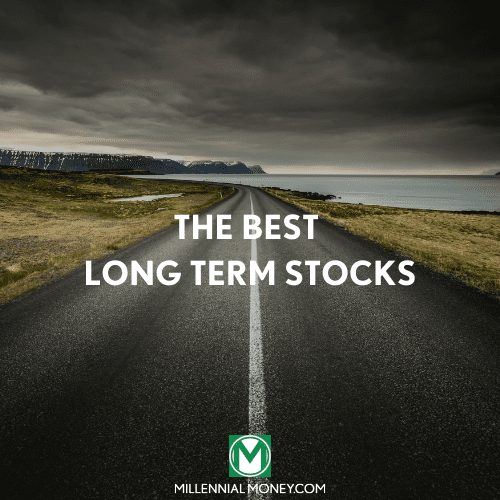If you’re serious about increasing your wealth, sooner or later you will have to overcome your hesitations and buy stocks.
It might seem scary at first. You might think you need special training or inside information or a fancy broker. A lot of people assume you need a huge chunk of cash to enjoy the benefits of the stock market. Others have a fear of losing every penny they invest.
But the truth is that the hardest thing about investing is getting started, and even that is easier than ever. And there’s no time like the present: buying stocks is the key to accumulating wealth. Very few people have gotten rich without doing it.
Fortunately, you don’t need a ton of knowledge to get started. You can start slow and learn as you go. And you don’t have to break the bank, either. A number of online brokers offer commission-free trades, so you can buy and sell stocks without paying any fees to a stockbroker.
With all this in mind, here’s a primer on the stock market to help get you started.
Why Invest in the Stock Market?
The reason that people buy stocks is that they offer the potential for capital appreciation that’s unmatched among investing strategies. In short, a stock represents a tiny piece of ownership in a corporation. So, the better companies perform, the more money you make. If you buy shares of a company like Amazon or Apple, you share in their growth as a business.
In other words, stocks — especially those that pay out dividends — can help you generate passive income, which accumulates without doing any work. You can get rich as your investment gains compound over a period of months, years, and decades.
While the stock market fluctuates in the short term, past performance indicates that it always goes up over a long enough timeline. Make no mistake, there are times when even great companies’ stocks or the market as a whole experience significant drops — it can feel like a roller coaster ride sometimes. But fun fact: over the past century, there is no point that you would have lost money over a 20-year holding period if you had invested in the S&P 500. As long as you have the right mindset and don’t panic, stocks are an incredible investing vehicle.
What is a Brokerage Account?
Buying a stock isn’t like going to a retail store to purchase a product. You have to go through a licensed and accredited full-service broker like Robinhood, Charles Schwab, or Fidelity.
In short, an online brokerage firm is a financial provider that buys and sells stocks on your behalf. All you have to do is fund your account then fill out a form indicating what you want to buy and the firm executes the transaction on your behalf.
Most online brokers offer low-cost or even free trades, many allow you to buy fractional shares (so you don’t have to plunk down $3,000 to buy a single share of Amazon), and the user experiences on broker platforms are designed to make it easy to get started. You could be an investor by the time you finish reading this post.
How to Buy Stocks Online
Once you’re set up with a brokerage account, you have access to a wide portfolio of options. It can be overwhelming, but don’t despair. Once you learn about how the different types of investments and platforms work, you will be amazed at how easy it is to buy stocks online.
Once you sign up for a brokerage account, you can buy stocks online in just a few clicks.
But, before diving in, you should think about forming a strategy to guide your investment decisions. What amount of money are you comfortable with potentially losing? What are your financial goals? What future results do you expect? These are questions only you can answer.
Let’s take a look at a few other factors to consider.
Assess Your Risk
First, spend some time building a profile to help you understand your financial situation. This should take into account your age, cash flow, and short-term and long-term goals.
Ultimately, this helps you determine your overall risk tolerance or how much you can afford to lose in your investment account.
For example, a 25-year-old investor who is just starting out has a much higher risk tolerance than a 50-year-old who is beginning to count down the days to retirement. The younger investor can afford to be much more aggressive in the market and take a riskier approach to stock trading. They have more time to recover from their mistakes. On the other side, the 50-year-old shouldn’t be putting their money at risk right when they’re going to start to need it.
Talk to a financial planner if you need help building a risk profile.
Learn How to Value Companies
Before you start investing, you’ll also need to learn how stocks are valued. If you go in blind and start buying stocks left and right, there’s a decent chance you’ll wind up losing money.
For example, a high stock price doesn’t tell the full story. Paying $1,000 for a share of a company might seem like a lot, but if it’s an amazing company with universally loved products and a huge lead over its competition, that could be a great investment.
On the other side, it might seem like a good gamble to buy shares of a stock that are just $1.00 apiece. But penny stocks are usually cheap for a reason and, unless you see a reason to take a chance, you might as well spend that buck on a scratch-off ticket.
There are as many ways to value companies as there are investors. Some rely exclusively on quantitative measures. The P/E ratio is among the most famous measurement tools for stocks. It’s the stock’s price-to-earnings ratio, and it’s determined by dividing a company’s market capitalization (the number of outstanding shares multiplied by the share price) by the company’s earnings over the prior four quarters.
The metric provides a snapshot and a number, but there’s no broad agreement on what makes for an expensive stock.
On the far end, other investors throw out all the numbers and just pay attention to the story of the stock. Does the company have great leadership? Do I use the company’s products? Do I think it’s going to continue to be a great and growing company into the future? Some of the greatest investors encourage people to simply buy what they know.
Overall, most successful investors combine pieces of quantitative and qualitative approaches to determine the share price they’re willing to pay.
Learn More:
Market, Limit, and Stop Orders
Once you’ve opened your account and figured out a stock to buy, there are various ways that you trade stocks, which we’ll briefly examine next.
Market Order
A market order lets you buy or sell stocks based on the market’s current best available price. This is valuable when you want to execute a trade as soon as possible.
Limit Order
When you place a limit order, you can buy or sell a stock based on a specific price or better. For example, if a stock rises to a certain threshold, the broker automatically sells it on your behalf. This is useful for people who closely follow market trends and are confident about how a stock will perform over time.
Stop Order
A stop order can be used to buy a security when it moves past a certain price point.
Determine Your Level of Involvement
Once you have a clear understanding of your risk profile and how to value stocks, you’ll then need to determine your overall level of involvement.
For example, maybe you are the type of person who likes to “set it and forget it” like Ron Popeil. If so, you may benefit from investments like index funds and mutual funds (more on this below). If you prefer more of a hands-on approach to investing, then you may benefit from buying individual stocks.
This largely depends on what you are trying to accomplish with investing. For example, determine if you are looking for explosive short-term growth, slow-but-steady retirement savings, or a combination of the two.
Types of Investments to Consider
Individual Stocks
If you have a high risk tolerance, you may want to buy individual stocks from companies like Tesla, Costco, Amazon, or The Home Depot.
When buying individual stocks, you should pay attention to both metrics and the news around that company. You might want to work with a financial advisor or a trusted source to help pick out various stocks that align with your strategy and needs.
For example, you might want to choose a well-established and stable retailer offering a high dividend at a reasonable stock price that produces steady returns over time. Or you may want to buy some undervalued companies that are poised for growth because you think the pricing is presenting you with a bargain.
Individual stocks are risky because prices can fluctuate based on a variety of market conditions and the business performance of the company — how many new watches did it sell, did it get that big government contract, is it in an industry that’s heading downhill? However, buying individual stocks can lead to strong returns over time, especially if you’re able to keep the right temperament and avoid panic.
Index Funds
Picking individual stocks can be a challenge. It’s even hard for seasoned financial veterans who have years of experience and troves of data. Even the best investors make bad picks.
As such, there is nothing wrong with using index funds which allow you to diversify your holdings across a broad range of companies. An index fund is essentially a collection of securities based around a specific market or sector.
Index funds generally offer a solid return over the course of many years. Some require minimum investments and you need to keep an eye on management fees, but index funds can make an outstanding foundation for your long-term investment portfolio.
Tip: When purchasing an index fund, make sure to look at the account’s expense ratio. This lets you know how much of the investment goes to operational costs. From the investor’s standpoint, a decent expense ratio is roughly 0.5% to 0.75% in an actively managed fund. Remember that every dollar that goes to something other than your actual investment is a dollar that’s not working for you.
Learn More:
ETFs
Exchange-traded funds (ETFs) are similar to index funds, as they tack baskets of securities. The big difference between the two is that ETFs are able to be traded through the day — much like stocks. Index funds can only be bought and sold based on the price at the end of the trading day.
Mutual funds
Another similar type of investment to consider is a mutual fund. Most index funds are actively managed, meaning an account manager takes a collection of companies around a particular index and then modifies it to spur growth.
Remember that index funds are designed to track specific markets while mutual funds are designed to try and beat markets. As such, mutual funds typically come with higher fees and carry more risk. And while they promise growth, they often don’t perform as well over time. In fact, fewer than half of all mutual funds fail to match the market’s overall returns once you factor in the fees you’re paying.
As you can see, there are many types of options and strategies to consider when buying stocks. New investors are encouraged to think about building a diversified portfolio by spreading out investments and minimizing risk. Build a foundation to spur future growth and achieve stability.
Learn More:
Should I Open a Retirement Account?
If there is one piece of investment advice that all young financial customers should consider, it’s to start planning for retirement when you’re young.
Retirement sneaks up on you quickly, and you don’t want to be the person bagging groceries to make ends meet while your friends are taking cruises and throwing back drinks at the beach during your golden years.
Certain retirement accounts can enable tax-deferred growth, allowing you to maximize your investments over the course of several decades.
Here are the three most popular retirement accounts that investors use:
- Individual retirement account (IRA): This type of account leverages pre-tax dollars. With an IRA, you can make contributions and you won’t have to pay taxes until you withdraw them in retirement.
- Roth IRA: A Roth IRA is similar to a traditional IRA, except it leverages after-tax dollars. IRAs are beneficial if you think your taxes are going to be higher during your retirement years than you are currently paying.
- 401k: A 401k is an employer-sponsored retirement plan that lets you contribute a portion of your salary so that it can grow on a tax-deferred basis. Oftentimes, employers contribute to a 401k as well as an added incentive.
Tips for Managing Retirement Funds
Don’t Discount Stocks
There’s definitely value in purchasing funds that promise diversification and long-term gains, but don’t forget about higher-risk stocks with stronger short-term growth potential. If you see a small company with an amazing product that people don’t know about yet, and you have the money, there’s something to be said for taking on that risk.
Just imagine: if you buy shares of four low-cost stocks that you believe in, three of them go bankrupt and one of them becomes the next Apple, you’re not even going to remember the lost investment on those other three. But just be sure that you’re buying a company for a reason, not a rumor or a “hot tip.”
However, it’s always advisable to never put more than 10% of your portfolio in one stock. Instead, you can mitigate your risk by holding a number of individual stocks.
Index Funds Are Great for Retirement Planning
Of course, you should also build a core portfolio around index and mutual funds, as well as ETFs. These types of investments can provide steady and reliable growth over time. They can also collect compound returns if you don’t touch them, which can lead to exponential gains as you approach your retirement years.
Try Not to Touch Your Money
When you set up a retirement account, you may have the option to withdraw funds on an as-needed basis. However, keep in mind that there could be stiff penalties for doing so. For example, if you take out money prematurely from an IRA before you reach retirement, you have to pay a 10% penalty in addition to a capital gains tax.
Touching your money before retirement can be a catastrophic mistake. It’s a top reason why investors tend to fall short in their finances after they stop working. If you need extra money along the way, try to obtain it elsewhere and leave your retirement accounts alone.
Frequently Asked Questions
Is it a good idea to sell stocks?
Selling stocks can be a great way to make money in the market. If you think that a stock has reached its peak value and is only going to drop from there, consider selling and collecting gains — especially if you have invested a lot of money in that account. Just keep in mind that once you sell, the stock may continue to grow in value.
Many investors point to a stock they sold too early as their biggest investing mistake. People often lose out on a lot of money this way and cheat themselves out of long-term gains. Lots of investors from the earliest days of Amazon were happy to sell at $300 per share after buying them for just a few dollars — who wouldn’t be happy with that kind of return? But with shares now over $3,000 a piece, many of those people are regretting that decision in a big way.
Should I use a robo-advisor?
There’s nothing wrong with using a robo-advisor through an app when you are first beginning to buy and sell stocks. A robo-advisor is going to ask you certain questions to get to know your financial position and then use an algorithm to buy and sell automatically.
There are a few things to watch out for if you take this approach, though. Some robo-advisors can have high fees. You can also miss out on certain opportunities by taking a passive approach. Very few people get rich using robo-advisors.
What are fractional shares?
When you buy a fractional share through a service like Robinhood, you purchase a piece of a stock that is less than a full share. This strategy is useful if you want to leverage a high-performing stock but you don’t want to pay for a full share. For example, many investors choose to take this approach when buying stocks like Amazon that are very expensive.
The great part is that as you buy fractional shares, you can choose to reinvest dividends and work your way up to a full share.
What are market fluctuations?
It’s often said that stocks are extremely volatile. In other words, the price of a security is going to rise and fall over the course of a period. Some swings can be very dramatic, while others tend to be more stable and predictable.
As an investor, you can’t control market fluctuations. However, you can build a portfolio in a way that can perform better as market conditions change.
What is Robinhood?
Robinhood is one of the leading brokerage firms available in the U.S.
Its main competitors are Schwab and Fidelity. There are roughly 3,600 brokers in the U.S. today.
You can use Robinhood to access a full suite of financial products like stocks, bonds, and funds.
Learn More:
- Read our full Robinhood Review
The Bottom Line
Buying stocks is one way to get rich through investing and there are many different ways you can buy them. Some people prefer to buy individual stocks while others choose to purchase collections of securities that can provide access to a wider range of investments.
The bottom line when buying stocks is to research them thoroughly and do what you can to minimize risk wherever possible. Best practices call for saving money on the side and avoiding putting all of your money in the market — especially if you are just starting out and are relatively inexperienced or if you are approaching your golden years and want to minimize risk.
That said, the stock market is great for investors of all types, and you don’t have to be an expert in the stock market to get rich. Buy great companies, keep a cool head, think about the long term, and invest new money regularly.
Keep learning and investing, let time do the work for you, and you’ll be just fine. Be patient and hang in there. I’ll be cheering you on every step of the way.





No comments yet. Add your own